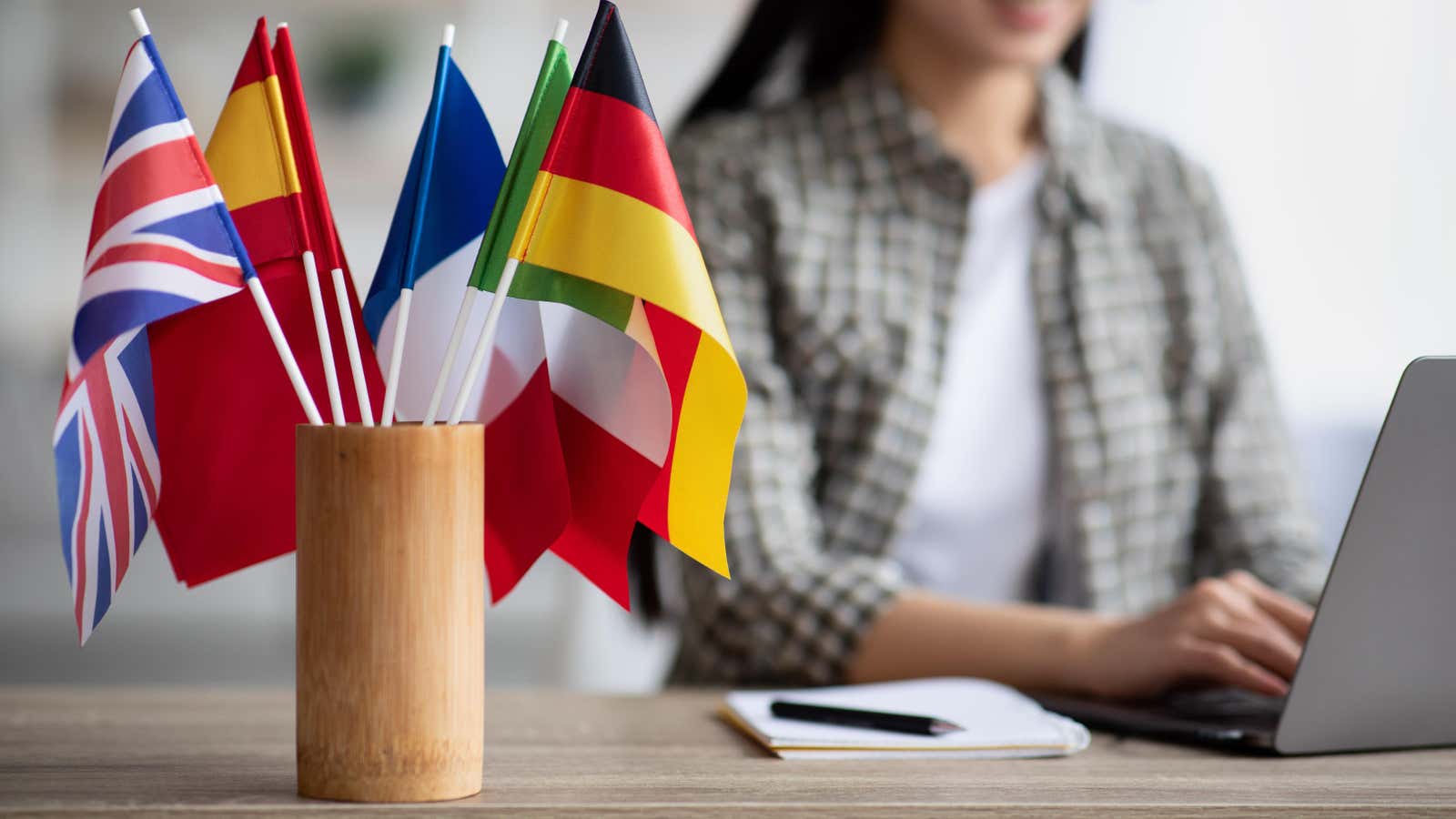Should You Use Babbel or Duolingo?

Apps like Duolingo and Babbel make language learning easier than ever. If you’re trying to decide which of these two industry-leading apps to use, here’s a quick guide to help you figure out which one works best to help you reach your goals.
How does Babbel work?
The Babbel program focuses on practical spoken language. Lessons start by learning individual words, and then build phrases based on them, and then sentences. Eventually, the app will run mock conversations, mixing matching and filling in the gaps exercises to help reinforce the lessons.
These sessions take 10 to 15 minutes and come from real native speakers. They are fast, use multiple learning methods, and mimic natural conversation, which many users will find useful. Notably, the program does not include a free tier, but it is still fairly affordable.
Pluses of Babbel
The biggest benefit of using Babbel is that its lessons are very practical: all pronunciation assistance comes from native speakers, and the lessons focus on speaking, which is better if you’re trying to actually communicate with native speakers.
Babbel offers a lot of support beyond their regular tutorials. You can view lessons in real time from language experts if you prefer more traditional classroom activities rather than in-app self-paced exercises. It also offers articles in all supported languages to help improve your reading comprehension.
The app has a personalized review manager that highlights the words you’re having trouble with and suggests ways to improve them. Research shows that personalization improves learning outcomes, so this tool can help you really make progress in your studies.
Babbel also has weaknesses
Babbel’s biggest downside is its cost. The monthly subscription costs $13.95/month, although if you pay for a whole year at once, it drops to $6.95/month. You’ll also only be able to learn one language at a time for most subscriptions, and you’ll have to pay extra for live classes.
Babbel also offers a lifetime subscription that allows you to study his lessons more than once, but costs $249. The platform only offers courses in 14 languages, which is significantly less than some alternatives.
How does Duolingo work?
Like Babbel, Duolingo uses 10-15 minute lessons and starts with simple building blocks before moving on to longer conversational language. Like Babbel, these exercises also use spaced repetition, bringing back old lessons to help you remember them. While Duolingo doesn’t offer a personal review manager, it does tailor lessons to the user.
Unlike Babbel, Duolingo courses are gamified. The app offers rewards and achievements for reaching your goals, making it feel more like a game than a formal education. The most notable difference between the two apps is that Duolingo has a free version while Babbel does not.
The best thing about Duolingo is that it’s free.
The most obvious benefit of Duolingo is that it’s free. The free version has ads, but you can remove them for $6.99 per month, comparable to the cheapest Babbel tier. Duolingo also supports 38 different languages for English learners , with more coming soon compared to Babbel’s 14 languages.
An app’s use of “gamification” to encourage you to keep using it can also be a helpful way to keep you motivated to learn. Trying to maintain any course of study for a long time – which you need to do if you really want to make learning a language rewarding – can be a difficult task as your focus and engagement wanes. Experience gamification can help you deal with this.
Duolingo’s exercises are also broad and varied, using multiple methods to avoid repetition and suit different learning styles.
Duolingo is only as good as the AI that runs it
While the Duolingo tutorials are helpful, they don’t offer as much external support as Babbel. Some users also complain that the app’s language doesn’t feel natural.
This is likely because where Babbel’s resources come from natural media, Duolingo’s resources are generated by artificial intelligence. As a result, its lessons tend to be more vocabulary-focused and often include unusual sentence structure and grammar, which can make Duolingo a lot less practical when it comes to actually using the language in real life.
Which is better, Babbel or Duolingo?
Learning a new language skyrocketed during early lockdowns, and as more and more people use these apps, you’ll probably want to know which one is the best choice. Overall, Babbel is the best option for those looking for a more hands-on and in-depth learning experience. Its use of native speakers and abundance of resources is hard to beat, but it comes at a cost. Duolingo is still a good choice for casual language learners, especially those on a budget. If you’re just trying to brush up on the language, or don’t plan on using it for a long time, this simple, free option might be a good choice.